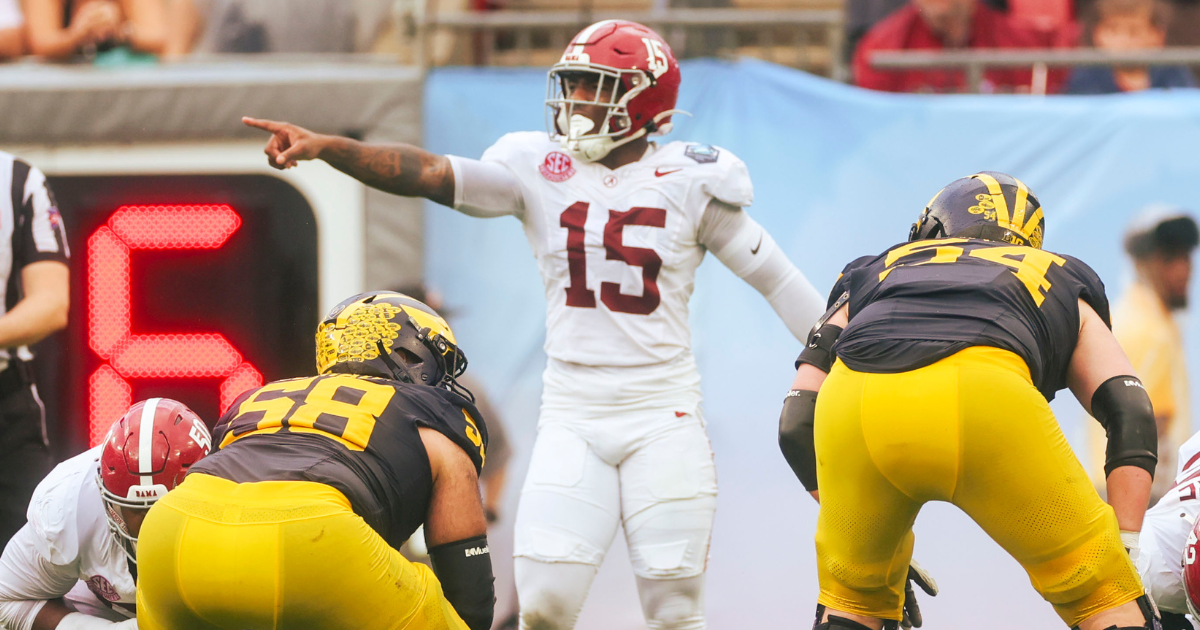Justin Jefferson’s journey from junior college to becoming a cornerstone of Alabama’s defense exemplifies the profound impact of leadership, adaptability, and skill development in collegiate football. Over two seasons, Jefferson’s contributions have been pivotal in reshaping the Crimson Tide’s defensive unit, particularly at the linebacker position. His progression underscores the importance of strategic recruitment, player development, and the cultivation of leadership within a team.
Upon joining Alabama, Jefferson faced the challenge of integrating into a defense renowned for its elite standards. Initially, his role was more supplementary, but his work ethic and understanding of the game quickly elevated him to a starting position. By the 2024 season, Jefferson had not only secured a starting role but also assumed the critical responsibility of being the defensive signal caller. This role, often referred to as wearing the “green dot,” is entrusted to players who exhibit exceptional football IQ and leadership qualities. Jefferson’s ability to manage this responsibility while maintaining high performance levels highlighted his growth and the trust the coaching staff placed in him .
Statistically, Jefferson’s impact was evident. In the 2024 season, he recorded 60 tackles, seven tackles for loss, two sacks, and one forced fumble over 12 games. These numbers reflect his consistency and ability to make plays in critical situations. His performance was not just about accumulating statistics but also about his presence on the field, his ability to read offenses, and his leadership in directing defensive schemes .
Jefferson’s development also coincided with a broader transformation of Alabama’s defense. Under the guidance of defensive coordinator Kane Wommack, the team emphasized versatility and adaptability. Jefferson’s ability to excel in various linebacker roles, from traditional inside linebacker duties to more dynamic, edge-rushing responsibilities, mirrored the defensive scheme’s evolution. This adaptability allowed Alabama to employ more complex defensive strategies, keeping opponents off balance and enhancing the overall effectiveness of the defense.
The infusion of talent through recruiting also played a significant role in the defensive transformation. The addition of players like Nikhai Hill-Green brought fresh energy and competition to the linebacker corps. Hill-Green’s presence challenged Jefferson to elevate his game, fostering an environment where continuous improvement was the norm. This healthy competition ensured that the defense remained dynamic and capable of adjusting to the evolving demands of college football.
Furthermore, Jefferson’s leadership extended beyond his on-field performance. His role as a mentor to younger players, sharing insights and experiences, contributed to the development of a cohesive defensive unit. This mentorship was crucial in maintaining consistency and morale, especially during challenging games or seasons.
In conclusion, Justin Jefferson’s impact on Alabama football over two years is a testament to the significance of leadership, adaptability, and continuous development in shaping a successful defensive unit. His journey from a junior college transfer to a key defensive leader illustrates how individual growth can drive collective success. As Alabama continues to build upon its defensive strategies, Jefferson’s legacy serves as a benchmark for future players aspiring to make a lasting impact on the program.



